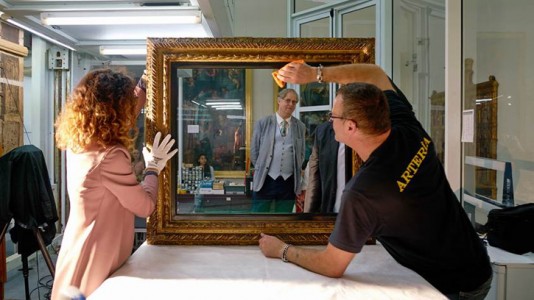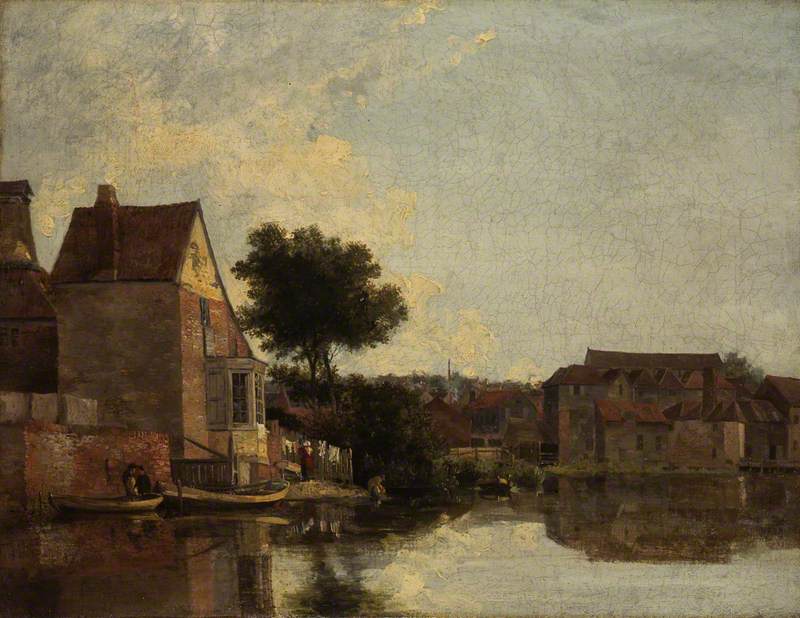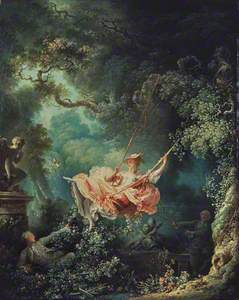The Wallace Collection in London preserves one of the most delightful and, ironically, one of the most emblematic French paintings of the entire eighteenth century, Les Hasards heureux de l’escarpolette (The Swing) by the painter Jean-Honoré Fragonard (1732–1806). The irony resides in the fact that this painting, which is so famous today, was originally intended to remain secret, reserved for the enjoyment of a few connoisseurs and closeted away in some inaccessible collector’s study. In fact, eighteenth-century France invented the notion of privacy or vie privée, of which the first dictionary definition appeared in 1690. Fragonard’s naughty and sensual painting fits in perfectly with the newfound practices and pleasures of intimate privacy as conceived by eighteenth-century France.
Like many erotic texts of the time, Fragonard’s painting brings together a kind of 'love triangle'.
The original painting was executed in 1767 and the composition was engraved in 1782 under the title Les Hasards heureux de l’escarpolette. We are exceptionally well informed of the circumstances of the commission, thanks to the private diary of the Parisian man of letters Charles Collé (1709–1783). On 2nd October 1767, Collé records the story told to him by the history painter Gabriel Doyen (1726–1806). Doyen had originally received the commission himself, but had passed on the embarrassing subject to Fragonard. 'A gentleman of the Court had summoned me to him, in order to commission a painting in the style that I shall describe to you. This gentleman was in his pavilion with his mistress (… he) finally admitted that he desired more than anything else to have, as painted by me, the picture which he was going to outline. My wish is, he continued, that you paint Madame (indicating his mistress) on a swing, with a bishop pushing it. You shall place me in such a way that I am given to see the legs of this fair child and better if you wish further to enliven your picture etc.... but as I was far from desirous of treating such a subject, so contrary to the genre in which I work, I referred the gentleman to Monsieur Fragonard, who undertook the commission and who now is producing this singular piece of work.'
The anecdote is doubtlessly true, but it is likely that Collé, himself the author of licentious texts, added some spice to his account. The framework is explicitly that of the libertine novels of the period, only a few years before the scandalous publication of Les Liaisons dangereuses by Choderlos de Laclos (1782). Like many erotic texts of the time, Fragonard’s painting brings together a kind of 'love triangle': a young man on whom fortune smiles (and who perhaps commissioned the painting?), a beautiful and elegant young woman who may be a well-known courtesan and, in the background, an elderly character, who may be the wealthy, official lover of the fair lady and who is using ropes to propel the movement of the swing. The motif of the swing is obviously not an innocent choice, as the French title indicates, for the swing expresses the ambivalence, if not the moral fall, of the fair young lady who allows herself to be propelled. In public parks in Paris at the end of the eighteenth century, swings had become an unquestionably exciting attraction, for one went there to catch a glimpse of the girls’ thighs as the air lifted their skirts, at a time when women did not wear knickers under their petticoats.
The painting remained a secret until the mid-nineteenth century, when it was acquired by the fourth Marquees of Hertford (1800–1870), in Paris. At that same period, the French collector Louis La Caze (1798–1869) was also buying up the finest paintings by Fragonard. Today, the sets of paintings brought together by these two connoisseurs constitute the finest collections of Fragonard’s paintings in the world. Since 1900, the whole of the Hertford collection is available to the public at the Wallace Collection in London. As for Louis La Caze, he bequeathed his impressive collection of close to 600 paintings to the Louvre museum in 1869.
Guillaume Faroult, Senior Curator, French paintings of the eighteenth century and British and American paintings, at the Louvre Museum, Paris
Translated to English by Dr Joseph Long












